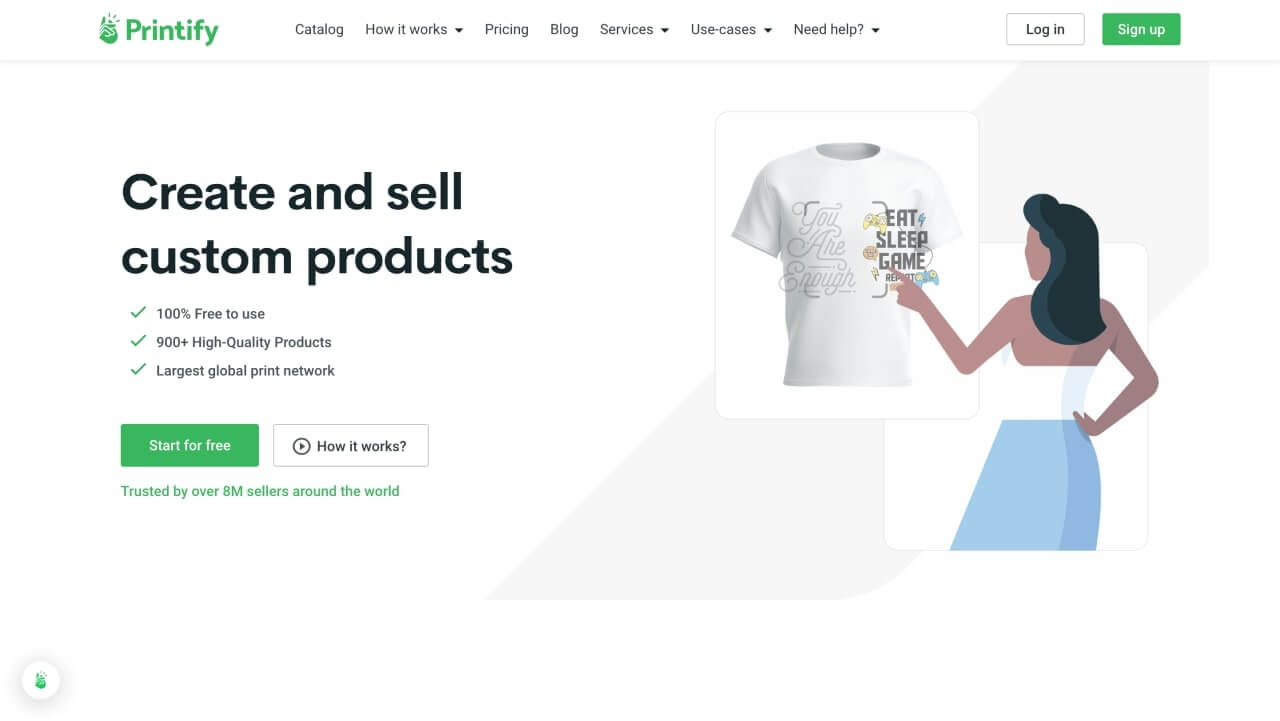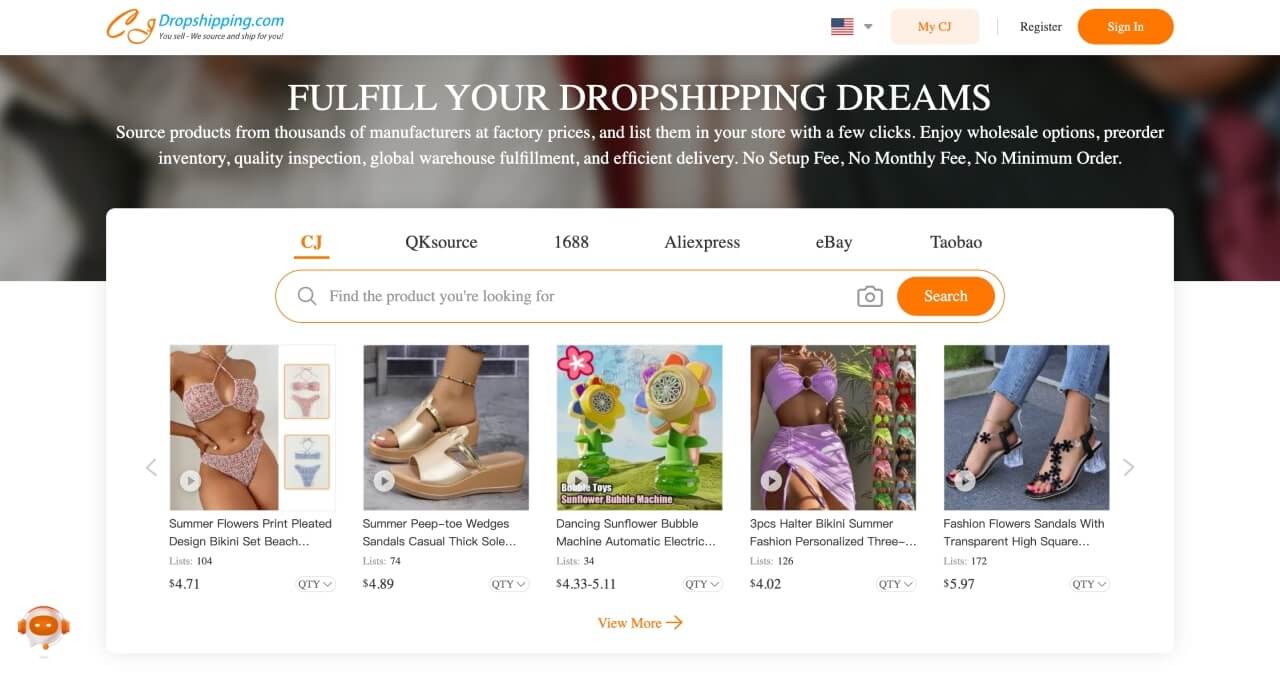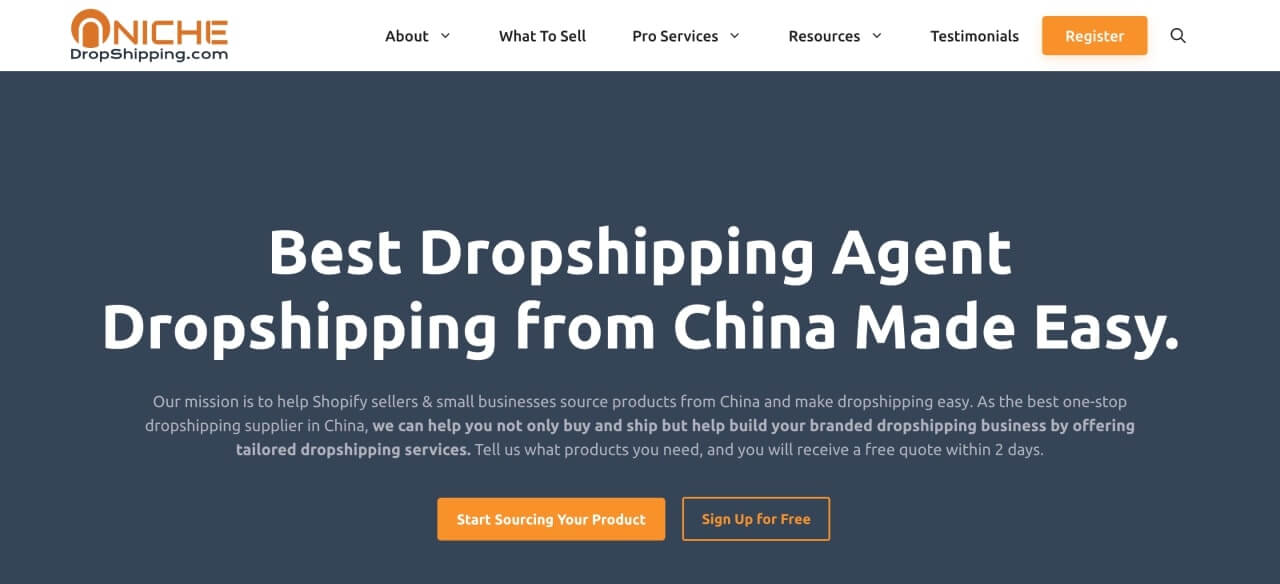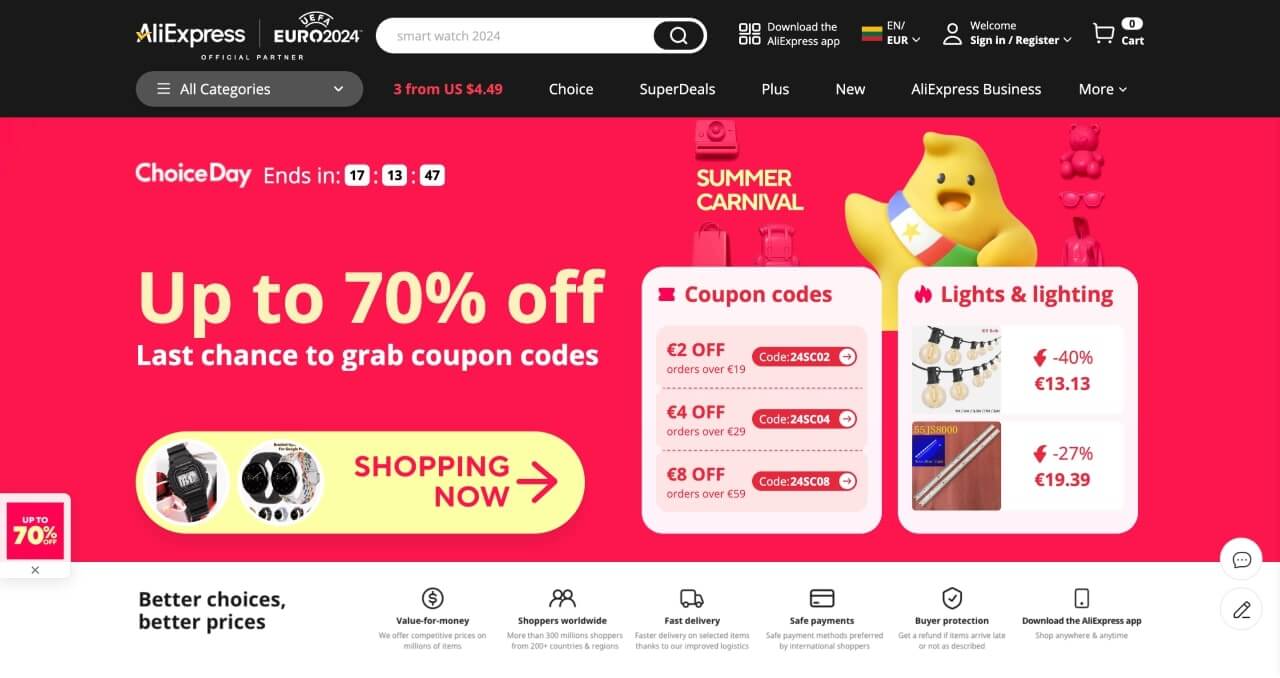Your business, your way – sell with Printify
With so many choices, how do you find suppliers for your online store, given that there’s an exciting opportunity to jump on the eCommerce train that’s heading for $6.3 trillion in 2024?
Starting an online business is a dream that inspires many people. With the right suppliers, it can quickly turn into a reality. Finding them may present a challenge, but don’t worry – we’re here to help you make the right selection so your business can easily thrive.
We’ll explore how to find suppliers for your retail business, including how to research, vet, and contact them.
What kind of supplier do you need?

The type of supplier you choose depends on your business model and goals. Not every supplier will be a good fit, so weighing up their advantages and limitations is vital to finding the right one.
We’ve outlined the different types of suppliers to help make evaluating your options easier.
Print on Demand companies and suppliers
With Print on Demand (POD), anyone can start a business without any inventory, warehousing, or logistical worries.
You can design, create, and sell various custom products – from stylish apparel and practical accessories to beautiful home decor and even pet products.
After a customer orders a product, the POD company or their suppliers take care of printing, packaging, and shipping the final product directly to the customer.
Typically, they don’t have any minimum order quantities, so you can start small and scale at your own pace.
The downside? Profit margins may be lower because every product is created on demand.
Industry data: Experts predict that the worldwide POD market size will reach $38.2 billion in 2030.
Quick tip
Learn how to start a POD business in 2026 from our step-by-step guide.
Dropshipping suppliers
Dropship suppliers offer a wide variety of products, including apparel, electronics, and even furniture. While similar to POD, dropshipping doesn’t allow you to personalize products.
The dropshipping model is easy to use, scale, and manage, and anyone can launch an online store with minimal investment.
Dropshipping suppliers provide the convenience of handling inventory and shipping for you, but it comes at a cost – a lower profit margin and fierce competition.
They typically don’t require a minimum order quantity, but ask the supplier just in case.
Industry data: The global dropshipping market size is set to reach $476.1 billion in 2026.
Quick tip
Is dropshipping worth it in 2026? Read our article to find the latest data and learn more about its advantages and downsides.
Private-label dropshipping suppliers
Private-label dropshipping suppliers not only provide dropshipping functionality but also allow you to customize the product.
Create fully-branded products according to your own vision – and with original products, you can set higher prices.
If you want to establish a brand that stands out, it’s a great choice due to your customization options. However, creating customized products can be more expensive, so this may require a higher investment than the previous options. Otherwise, the concept is similar – they take care of production while you handle pricing, marketing, and selling.
Private-label dropshipping suppliers require both minimum order quantities and upfront investment for your products.
Quick tip
Learn more about private-label dropshipping from our quick guide and discover how new and growing companies can benefit from this model.
Wholesale suppliers
Wholesale suppliers sell products in bulk, even to new businesses. They purchase items directly from manufacturers at discounted prices.
This way, wholesale distributors can offer products for less, allowing eCommerce entrepreneurs to buy large quantities at lower unit costs. Typically, the more products you order, the lower the cost per unit.
While this allows for higher profit margins, there’s a downside – you need an initial investment for purchasing products and storage solutions.
Industry data:The business-to-business eCommerce market will reach $57.5 billion in 2030.
Quick tip
Need more options? Learn how to start an online store without inventory using other business models.
Find and research suppliers

In eCommerce, researching and vetting suppliers is crucial since they’ll be your closest business partners – whose products and services can make or break your success.
Consider these factors when reviewing suppliers:
- Reputation. A solid reputation is a must for every supplier. Check third-party reviews, paying close attention to the quality of their products, communication, and shipping times.
- Location. Check for domestic instead of overseas suppliers if you want to sell locally. This way, you can reduce shipping costs and time.
- Quality and selection. Make sure the supplier offers a wide variety of products that meet your brand’s quality standards.
- Fair price. Compare your competitors’ pricing to ensure you’re getting the best deal for your business.
- Turnaround time. Find out whether they create and deliver products as promised and in a timely manner.
- eCommerce store integrations. Check whether the supplier offers integrations with your preferred sales channel.
- Order requirements. Start by choosing suppliers without order minimums. This way, you can avoid buying in bulk, reducing the risk of losing money due to overpricing or overstocking.
A few examples of suppliers
We’ve listed a few suppliers worth looking into. Each one provides a range of products and services for businesses of all sizes.
Printify

Printify is an all-in-one POD platform with no upfront costs and a variety of high-quality products anyone can customize to their heart’s content.
With just a few clicks, you can design and add original products to your store and stand out among other businesses.
We have a worldwide network of around 80 thoroughly-vetted Print Providers in the United States, the United Kingdom, Spain, Slovenia, Poland, the Netherlands, Latvia, Germany, Czechia, Canada, Australia, and China.
CJDropshipping

CJDropshipping is a great wholesale supplier with a massive selection of products. They offer integrations with both online marketplaces and platforms. You can even filter products for specific locations.
They have warehouses in the US, Germany, Australia, Canada, the UK, France, Italy, and China.
NicheDropshipping

A dropshipping supplier who aims to help small businesses source items from China.
Their services include product sourcing, warehousing, and private labeling. In addition, they can help to build your branded dropshipping business by offering tailored dropshipping services.
They have warehouses in the US and China.
AliExpress

AliExpress is one of the largest retail marketplaces in the world, with more than 100 million products at fair prices. They cater to a wide variety of niches and even have a selection of private-label suppliers.
However, with an abundance of options, sifting through and finding the best product supplier may be challenging because you have to contact these suppliers directly.
They have warehouses in China and Europe.
Quick tip
If you want more options, explore our article on the top 15 dropshipping suppliers to find the right one for your needs.
Contacting suppliers 101

After finding a potential supplier, contact the company directly to discuss product offerings, pricing, fulfillment timeframes, and essential details applicable to your business.
It’s also an excellent way to start building a relationship with the supplier, which is highly important in the long run.
Explore these tips for smooth and professional communication:
- Get familiar with the company’s services. Before reaching out, be one step ahead and learn about their offerings, product costs, reviews, and reputation in the industry.
- Project confidence. Even if you’re new to eCommerce, show that you’re well-informed by using clear, concise, and industry-specific language.
- Call the company. Talk to a real person. This will help you gauge their customer service and responsiveness, giving you a better idea of what to expect when working with them.
Quick tips
– Remember that you and the supplier want to establish a mutually beneficial relationship. If you already have a store, send them links and show that you mean business.
– Research and contact several suppliers to ensure you receive competitive prices and the most reliable business partner.
What questions to ask a supplier?

Now that you’ve researched and found suppliers, it’s time to ask the right questions to ensure the company meets your requirements. Try these examples:
- What’s your company’s background? Inquire about the company’s history and request references from other customers. If they avoid sharing this information, consider looking elsewhere.
- What’s the cost per unit? Inquire about the price. Usually, the more products you order, the lower your cost per unit.
- Are there any minimum order requirements? Ask about the minimum quantity required for orders and whether there’s flexibility based on your needs.
- What’s your return and refund policy? If the product you order happens to be defective or damaged, it’s important to know how they will act and what guarantees they provide.
- What’s the fulfillment timeframe? Ask how long production and shipping usually take to ensure they align with your customers’ needs.
- What are your payment terms? Ask about accepted payment methods, deadlines, and whether paying early warrants a discount.
- What could affect your supply chain? Don’t risk working with a supplier who will make you wait. Find out everything you can about their supply chain and potential disruptions before committing to them.
The questions will vary depending on your business model, goals, and priorities.
For example, suppose you market your brand as ethical, sustainable, and eco-friendly. In that case, you should ask about the company’s commitment to sustainability. Including where their manufacturers get raw materials from and if they comply with environmental regulations and standards.
Order samples
Order a sample from the supplier’s product catalog as the final step to check the product and design quality, plus the fulfillment and shipping timeframe.
It’s a great way to ensure they meet your standards before placing a larger order.
In addition, ordering samples gives you the opportunity to test the supplier’s customer service and responsiveness. Also, if you’re satisfied with the products, use the samples to take photos for your listings.
Sample pricing will vary depending on the supplier, but the investment is worth every penny.
Alternative ways to find a supplier
Let’s briefly explore other ways to find manufacturers and suppliers, both on and offline:
- Industry contacts. If a supplier can’t accommodate your needs, ask them for recommendations or referrals to others they may know.
- Trade shows. Attend a trade show to network with potential suppliers and see their products in person before deciding.
- Social media. Join social media groups for eCommerce sellers and ask what suppliers they use.
- Professional networks. Join industry-specific networks, trade organizations, or online forums to connect with suppliers and get recommendations from others in your field.
Additionally, contact local chambers of commerce or business associations for recommendations and networking opportunities.
While these aren’t the easiest ways to find suppliers, they have the advantage of being more personal, so you may get better results.
Start an online business with Printify

With the help of our POD service, anyone can open a store and sell online. We provide everything you need to design, create, and start selling products with ease.
Our beginner-friendly platform is 100% free and accessible to everyone, everywhere.
You don’t need to invest in any inventory or storage space. As soon as you make a sale, we’ll take care of everything from printing, packaging, and shipping products directly to your customer’s doorstep.
If any questions arise, our Merchant Support Team will gladly help you find a solution in the most efficient way possible, 24/7.
Step 1: Sign up for Printify
Create an account – it’s easy to set up. You’ll gain access to more than 850 customizable, high-quality products, free design tools, and a worldwide network of carefully-vetted Print Providers.
Step 2: Select a product
Our Catalog has a wide selection of products, including stylish apparel, useful accessories, and trendy home decor. Filter them by your target market or preferences like price, size, and brand. After you choose your favorite, click Start designing.
Step 3: Apply your design
With our intuitive Product Creator, you can quickly apply a design to any of our products. Use our AI Image Generator, Text Editor, and Graphics Library to create original designs from scratch.
Step 4: Create or connect your store
We provide seamless integrations with all major eCommerce players, both platforms and marketplaces. Alternatively, create a Printify Pop-Up Store to start selling with ease. We fulfill each order on demand, so there are no upfront costs to get started.
Frequently asked questions
Explore our article, 15 Best Dropshipping Suppliers, for valuable information about finding the right one for your business.
Alternatively, find suppliers via industry-specific organizations, social networks, or conferences.
Another simple way is to use search engines, find companies, contact them directly, and ask for more information.
A great way to find suppliers is through dropshipping and wholesale directories, for example, Global Sources or Worldwide Brands. They’re comprehensive online resources that list and categorize verified suppliers and wholesalers, providing vital information about each supplier.
However, there is no single best way to find wholesalers or dropshipping suppliers – it depends on your preference. While some prefer attending trade shows and industry-specific conferences, others much rather contact and vet suppliers online or via phone.
While there are many dropshipping and POD sites, see our list of the best dropshipping suppliers.
Alternatively, browse through directories, like Salehoo or Inventory Source, to quickly find suppliers for your online store.
These are some of the best dropshipping suppliers. However, keep in mind that not all suppliers will be the right fit for your specific business needs, so it’s important to thoroughly research them before making a decision.
Additionally, consider factors such as the quality of products, shipping times, and customer service when choosing a supplier. If possible, work with local manufacturers and suppliers to reduce delivery times and shipping expenses.
Closing thoughts
Diligence is key when learning how to find suppliers. Be sure to thoroughly research, carefully vet, and clearly communicate with your potential suppliers.
Contact several companies, compare prices and fulfillment times, and assess their reliability before settling on a choice.
Start on the right foot by following this guide, and you’ll be on your way to building strong relationships, better deals, pleasant communication, and overall eCommerce success!












